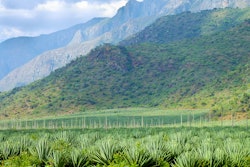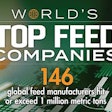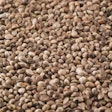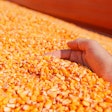
In 2023, global egg production reached 91.128 million metric tons (MT), providing about 82 million MT of excellent nutrition for consumers around the world. It also resulted in about 9 million MT of eggshells.
Eggshells are rich in calcium carbonate, proteins and a wide range of interesting molecules, but what happens to them?
The short answer is that more than 90% of eggshells are thrown away by consumers along with other food waste. Few consumers are aware of eggshells’ value as a soil amendment that can stabilize soil acidity in gardens or for houseplants.
The remaining eggshells, about 900,000 MT, are generated by the egg processing sector. For years, egg processors were burdened by their disposal, paying to bury them in landfills. However, by the early 2000s, scientists had taken a closer look at eggshells, not only at the shell itself, comprising ~95% calcium carbonate, but also at the two membrane layers that are extremely rich in proteins, such as collagen, hyaluronic acid and lysozyme.
Unique composition and structure
Due to their unique chemical composition and structure, resembling the extra cellular environment in body tissues, the eggshell and its membranes have been used in research to develop numerous biomedical applications.
In addition to being a great source of calcium, the shell and its membranes have been tested to facilitate the regeneration of various human tissues, including bone, cartilage and nerves. They have also demonstrated benefits in wound dressing, contributing to the healing of skin lesions.
Eggshell and eggshell membranes are also the starting point to generate nanoparticles able to deliver drugs directly to infected or cancerous cells. Eggshell membrane derived molecules, such as hyaluronic acid, are also used in the preparation of health supplements with claims including osteoarthritis-associated pain alleviation and aiding joint health in humans and companion animals.
While the use of eggshell and eggshell membranes in biomedical applications requires a huge financial investment in research and clinical studies to obtain regulatory approval, some other uses are much simpler to develop and commercialize.
In addition to mixing eggshells with other soil nutrients to develop a consumer product for soil amendment, wasted eggshells have been used to trap within their fine matrix heavy metals, dyes and pesticides that may be present in waterways.
Eggshells, a renewable source of calcium oxide, can be incorporated into the formulation of cement, reducing its environmental burden. Calcium oxide derived from eggshells is also used as a catalyst in biofuel production, as a coating agent for ink-jet printing paper, as a UV-protecting component in synthetic polymers and as filler in the plastics and ceramics production.
Eggshell membranes’ porous structure and high decomposition temperature have also led scientists to investigate their applications in electrical devices, such as fuel and solar cells, capacitators and various types of batteries. Recent work has demonstrated eggshell membranes’ potential to serve as a scaffold used to initiate the production of cultured meat. It seems that there is no end to the ways these waste materials can be used and recycled.
Between 2015 and 2020, 75.5% of all patents filed worldwide on uses for eggshells were from Chinese inventors. Perhaps little surprise given that China accounts for over a third of global egg output in 2023.
While eggshells and their membranes may have many applications and be an additional revenue stream for egg processors, we should never overlook eggs’ great nutritional value. Nevertheless, we are extremely fortunate that the more eggs used by the processing sector, the more business opportunities can be created from eggshells.


















